A composite rod of mass 2m and length 2l comprises two indentica rods joined end to end at P. The composite rod hinged at one of its ends is kept horizontal as shown in the figure. If it is realeased from rest.

a. find its angular speed when it becomes vertical.
b. If the lower rod gets detached with the upper rod due to centrifugal effect at their joint P, at the vertical position of the composite rod, find their linear and angular velocities just after their separation.
a. Let the composite rod acquire an angular speed ωat the vertical position. It centre of mass C moves from C1 to C2.
Therefore the potential energy (gr) of the composite rod decreases by 2mgh where h=l. Applying conservation of mechanical energy at horizontal and vertical position.
Using △K+△K=(2m)gl
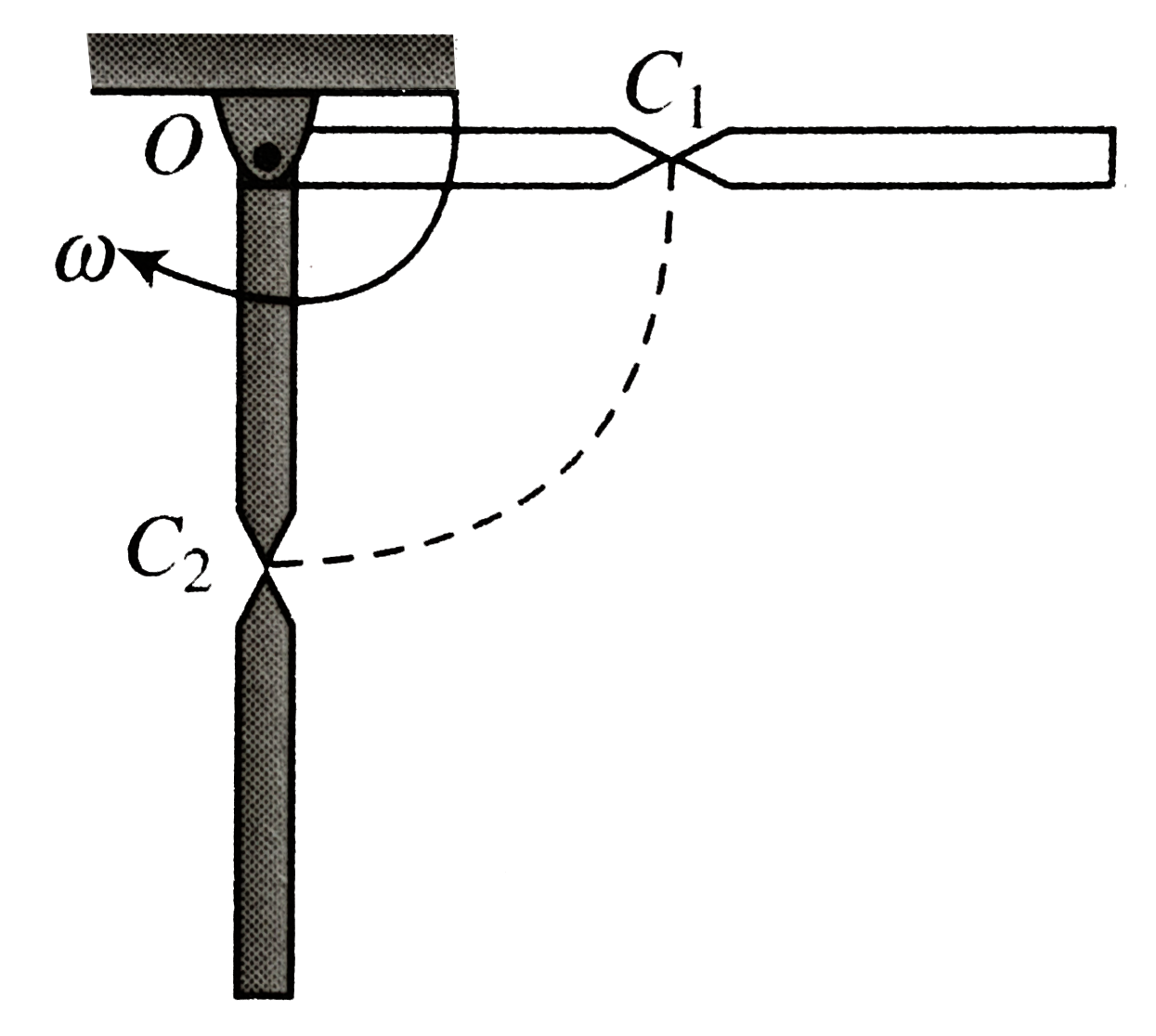
where l=MI of the composite rod about O=(2m)(2l)23=8ml23
⇒ω=√32gl
b. Referring to figure. we can see that just at the vertical position., during the impact, the weights of the component rods 1 and 2, the raction force R at the pivot and the reaction forces N at the joint of the rods, pass through the pivot O.
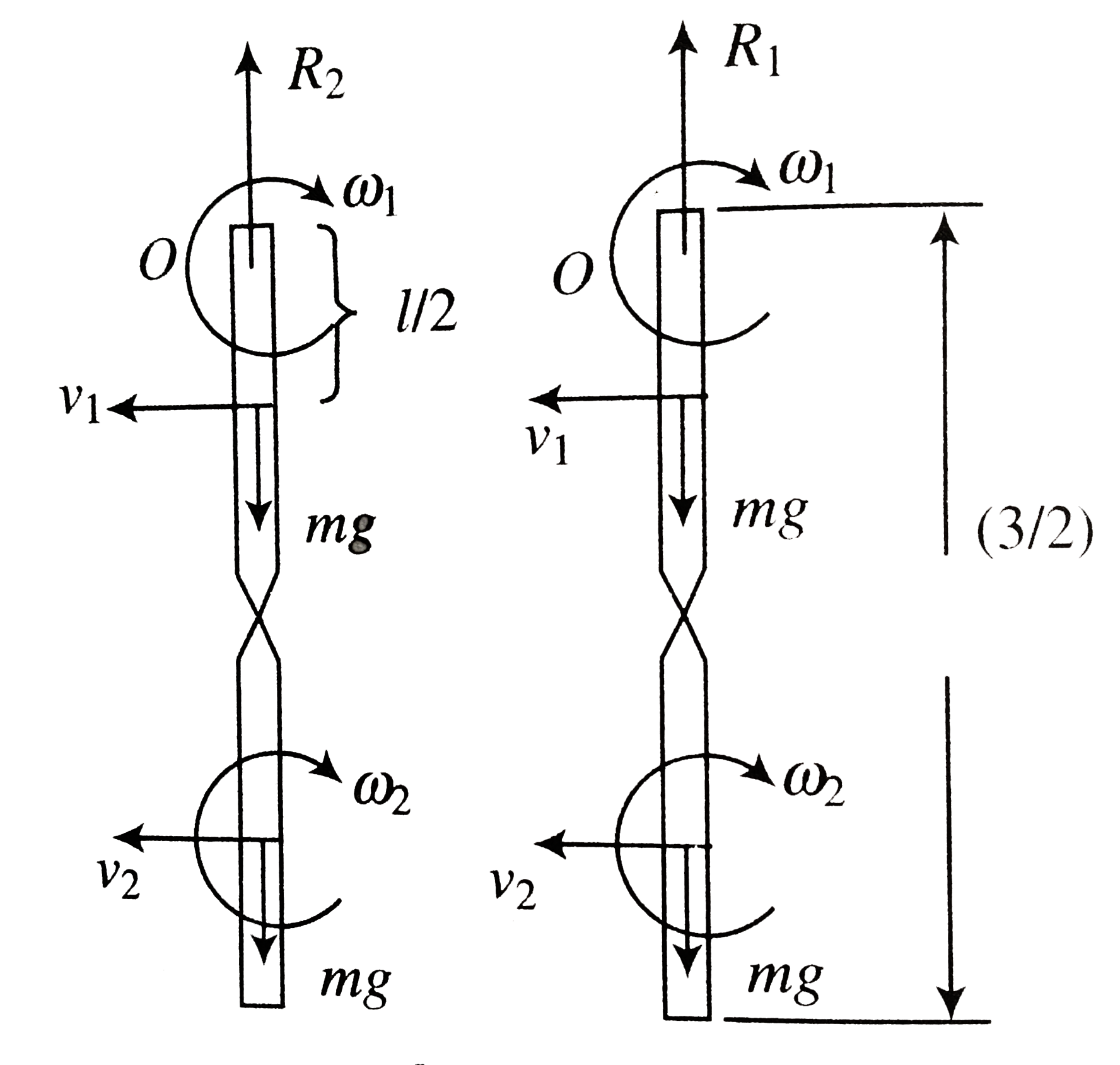
Therefore these forces cannot produce anny moment about O, that means the rods fo nt experience any horizontal force during breaking, at vertical position before the angular momentum of the system about O remains constant just after the breaking we can also argue that the angular momentum of each rod remains constant just before and after breaking. because all these radial forces cannot produce any moment about the centre of mass of the rods 1 and 2 vertical position. Therefore, the linear velocities of the CM of the rods remains constant.
⇒ω1=ω
v′1=v1=ωl2{for rod1}
ω2=ω
=v′2=v2=(32)ωl{for rod2}
⇒ωO1=ω2=√3g2l and v2=32√32gl
Topper's Solved these Questions
- RIGID BODY DYNAMICS 2BOOK - CENGAGE PHYSICSCHAPTER - RIGID BODY DYNAMICS 2EXERCISE - Exercise 3.1
11 Videos
- RIGID BODY DYNAMICS 2BOOK - CENGAGE PHYSICSCHAPTER - RIGID BODY DYNAMICS 2EXERCISE - Exercise 3.2
13 Videos
- RIGID BODY DYNAMICS 2BOOK - CENGAGE PHYSICSCHAPTER - RIGID BODY DYNAMICS 2EXERCISE - Interger
2 Videos
- RIGID BODY DYNAMICS 1BOOK - CENGAGE PHYSICSCHAPTER - RIGID BODY DYNAMICS 1EXERCISE - Integer
11 Videos
- SOUND WAVES AND DOPPLER EFFECTBOOK - CENGAGE PHYSICSCHAPTER - SOUND WAVES AND DOPPLER EFFECTEXERCISE - Integer
16 Videos
Similar Questions
A rigid rod of mass m & length l is pivoted at one of its ends. If it is released from its horizontal position, find the speed of the centre of mass of the rod when it becomes vertical.
View SolutionA rod AB of mass M and length L is shown in figure. End A of rod is hinged and end B is lying on the ground. Find the
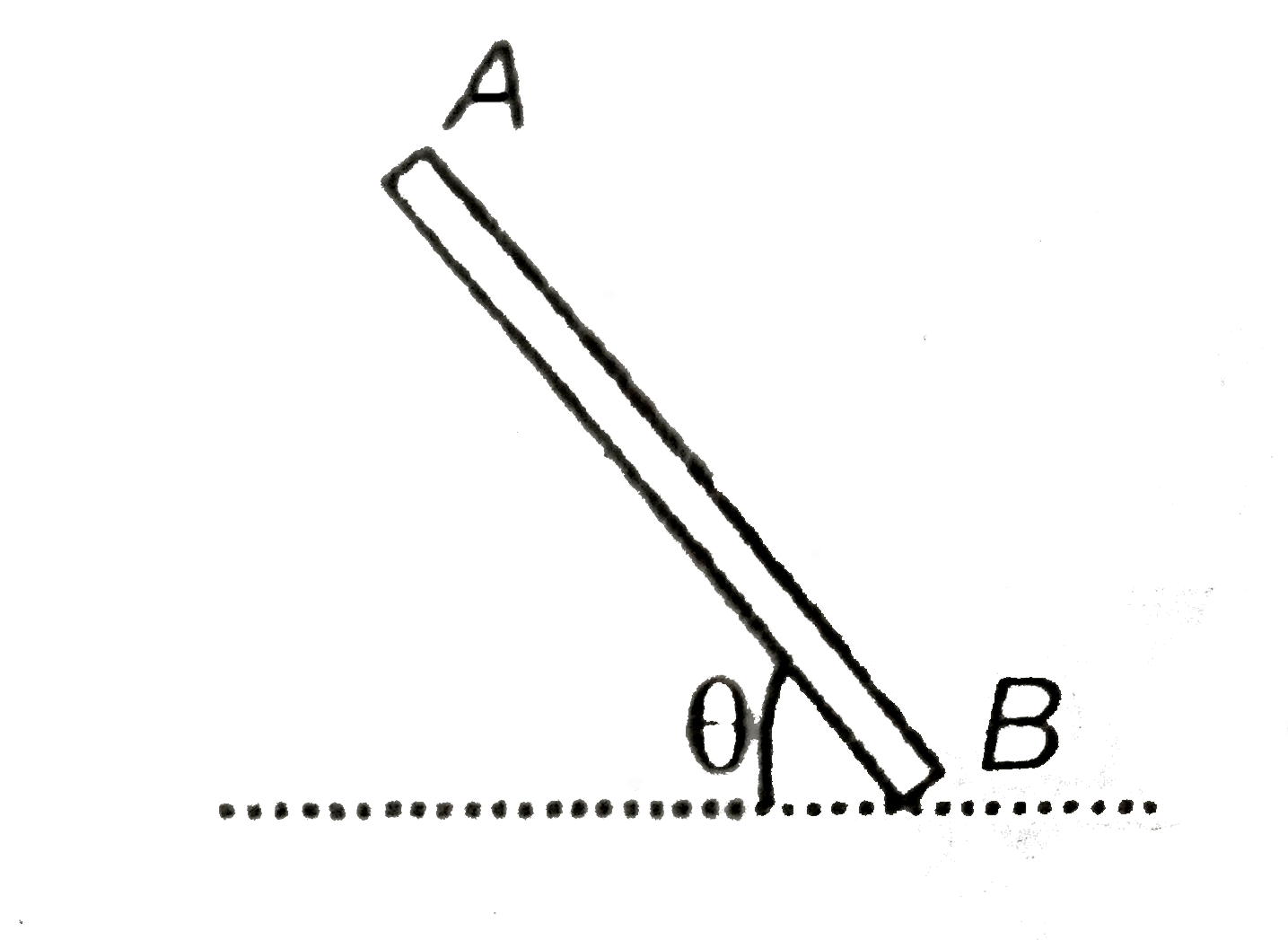
Horizontal component of the force applied by the hinge
View Solution
Knowledge Check
One end of a uniform rod of length l and mass m is hinged at A. It is released from rest from horizontal position AB as shown in figure. The force exerted by the rod on the hinge when it becomes vertical is
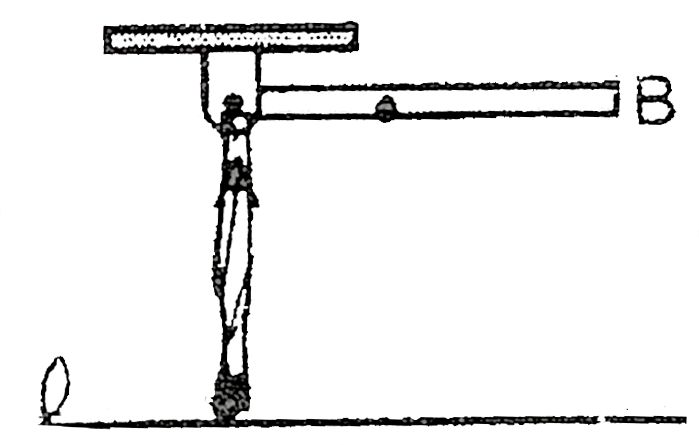 A32mgB52mgC3mgD5mg
A32mgB52mgC3mgD5mgA rod PQ of mass M and length L is hinged at end P. The rod is kept horizontal by a massless string tied to point Q as shown in the figure. When string is cut, the initial angular accleration of the rod is.
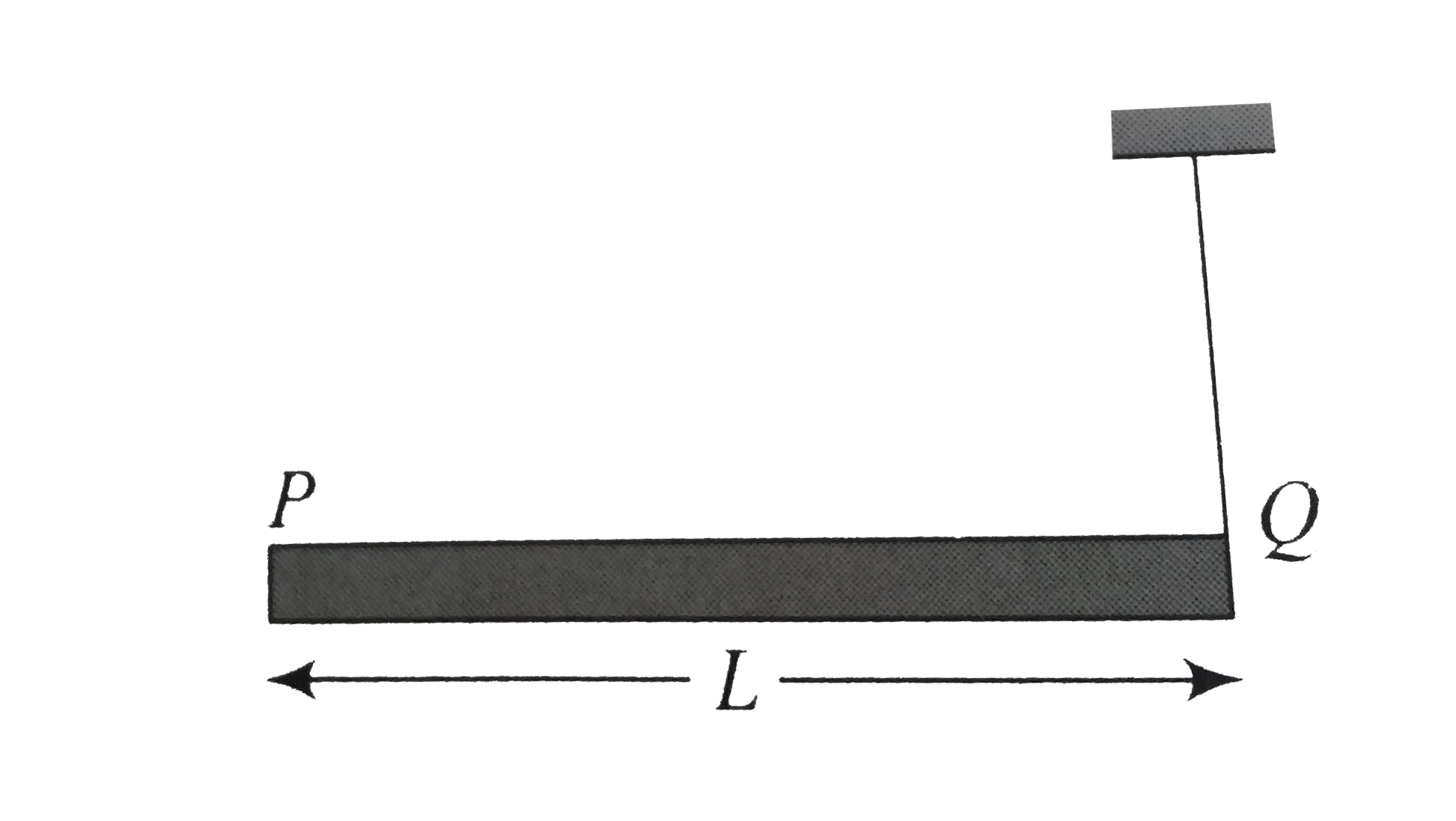 A3g2LBgLC2gLD2g3L
A3g2LBgLC2gLD2g3LOne end of a uniform rod of length l and mass m is hinged at A. It is released from the rest from horizontal position AB as shown in figure. The force exerted by the rod on the hinge when it becomes verticle is
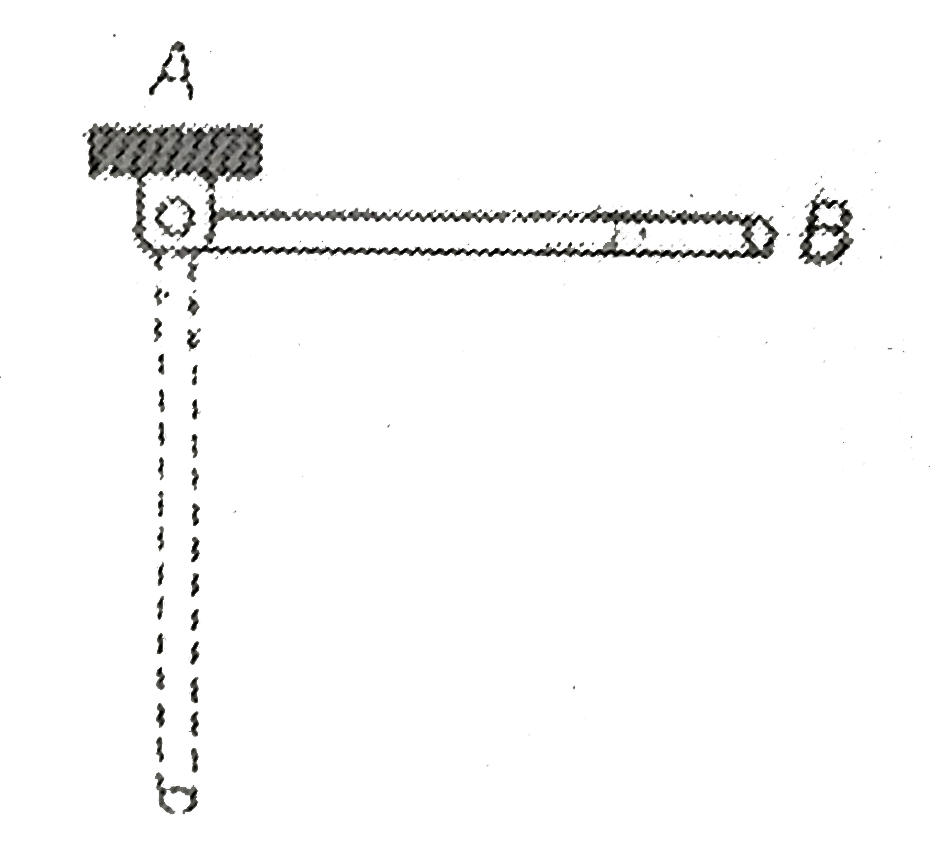 A32mgB52mgC3mgD5mg
A32mgB52mgC3mgD5mg
A rod AB of mass M and length L is shown in figure. End A of rod is hinged and end B is lying on the ground. Find the
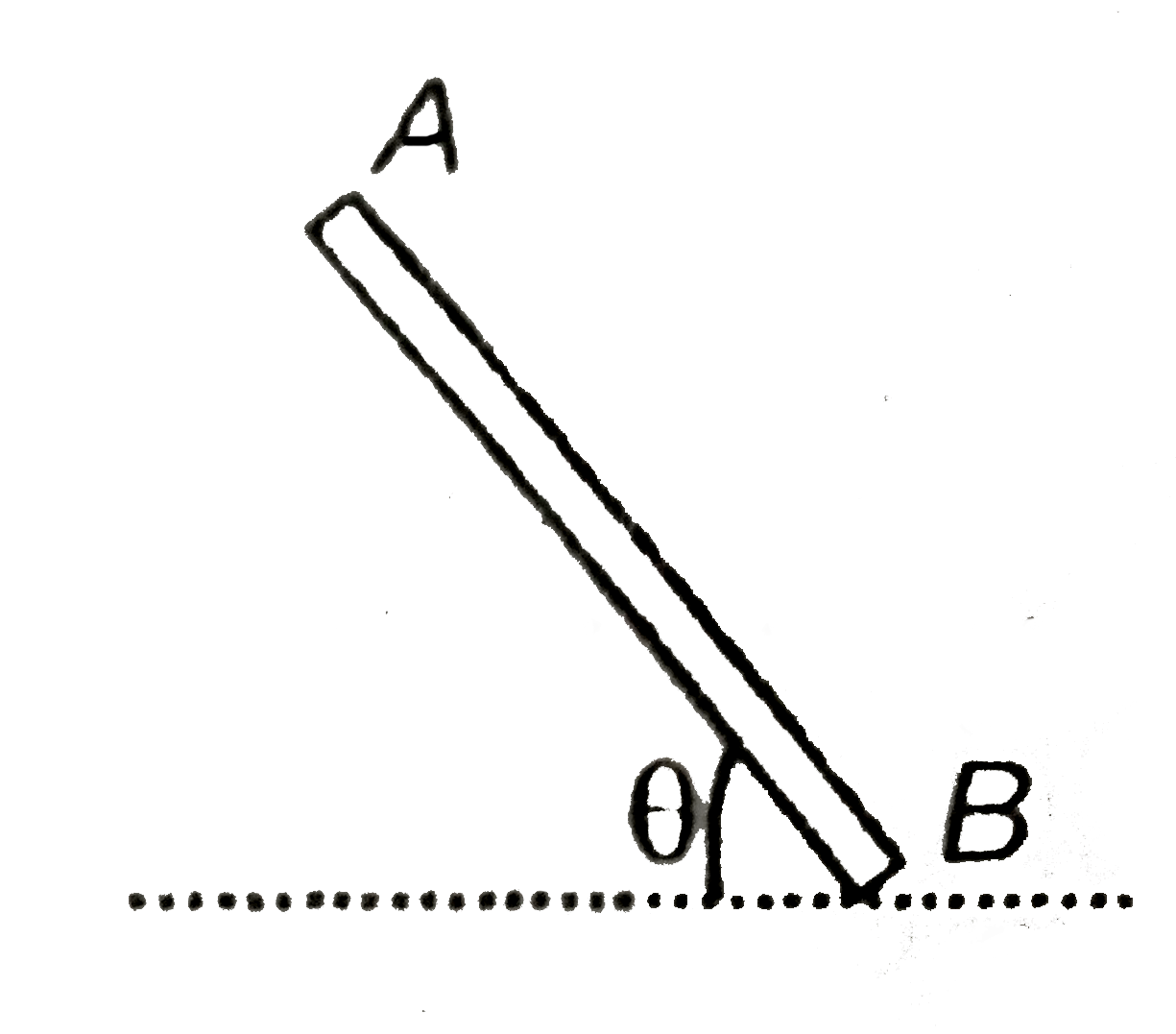
Normal reaction by ground on the rod
View SolutionA rod of mass m and length l is hinged at 'its' end and released from rest in position shown. Find the force exerted by the hinge when the rod becomes horizontal
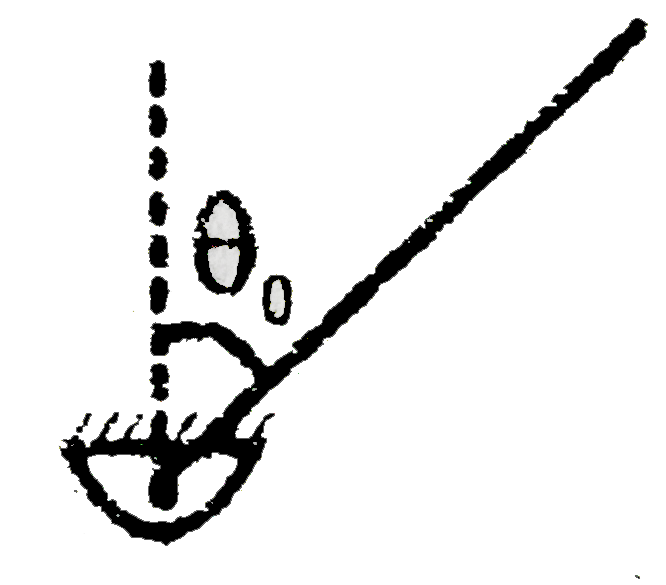
View SolutionA rod of mass m and length L is hinged at its top end. If the rod is in equilibrium making an angle of 30∘ with the vertical when a horizontal force F is applied as shown in figure, then the value of F is:
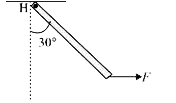
View SolutionA rod of mass 'M' and length'
L' is hinged about one end and a
particle of mass 'M' is
attached to its other end If it is
kept horizontal with the help of
a spring of spring constant 'K'
as shown in fig. find the
extension in spring :-
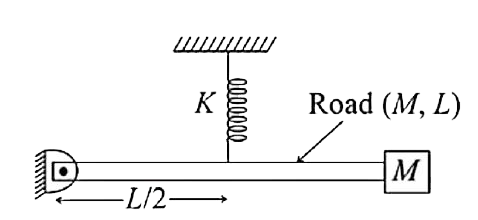
View SolutionA uniform rod of length l is from rest such that it rotates about a smooth pivot. The angular speed of the rod when it becomes vertical is.
 .
.
View Solution
